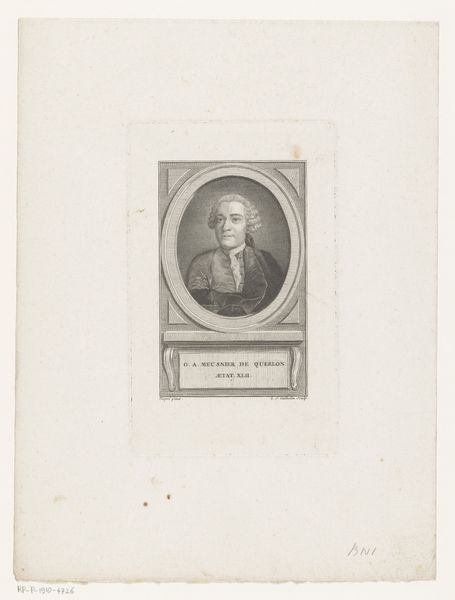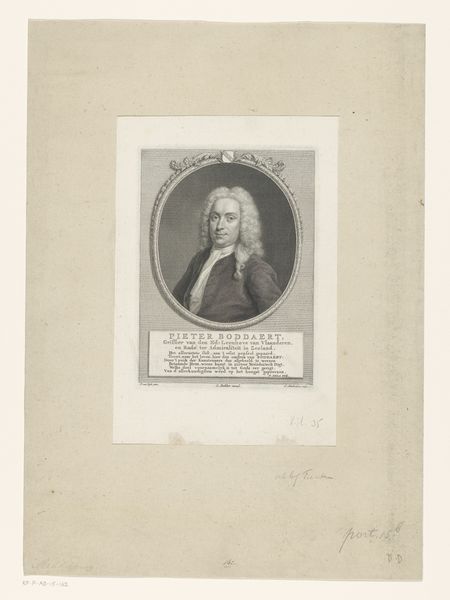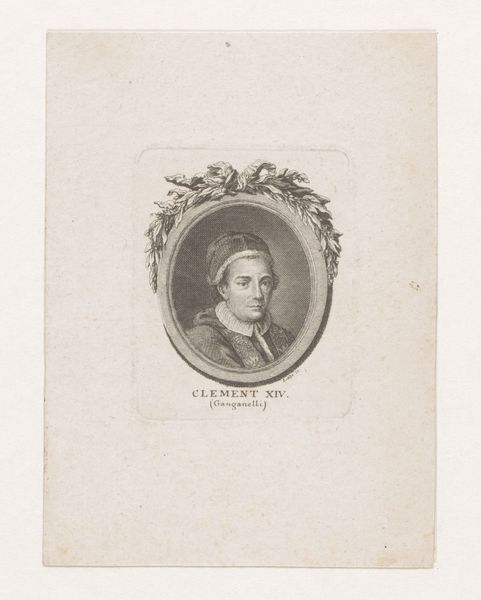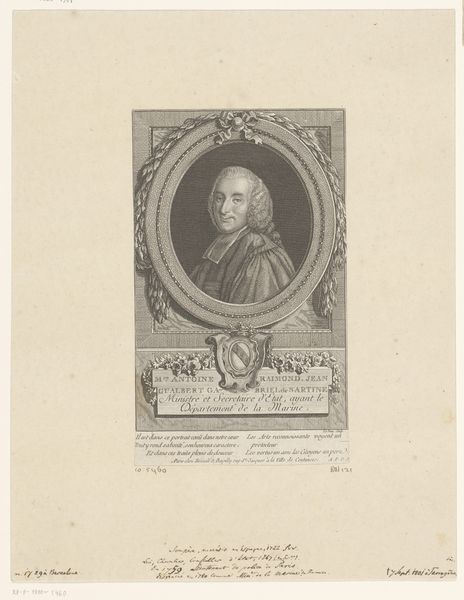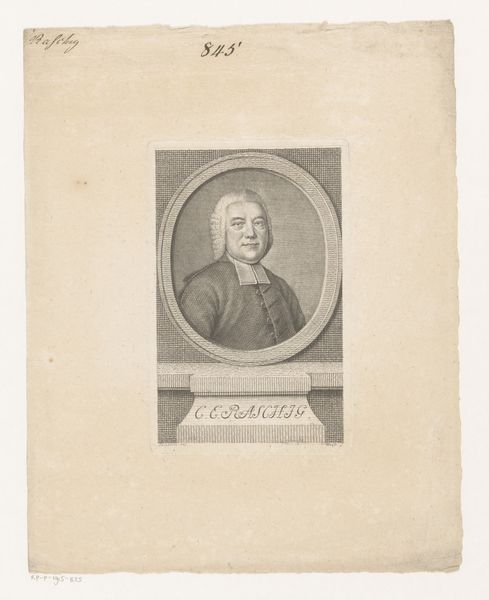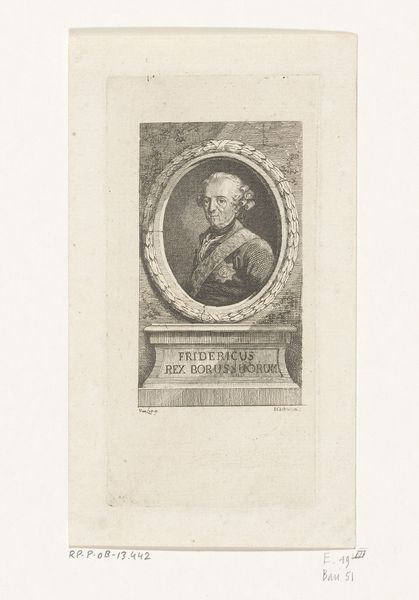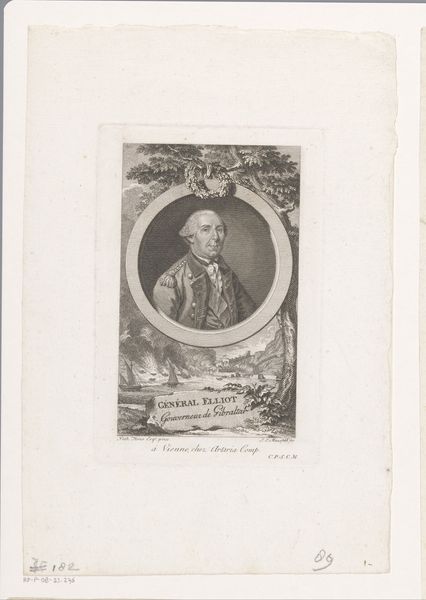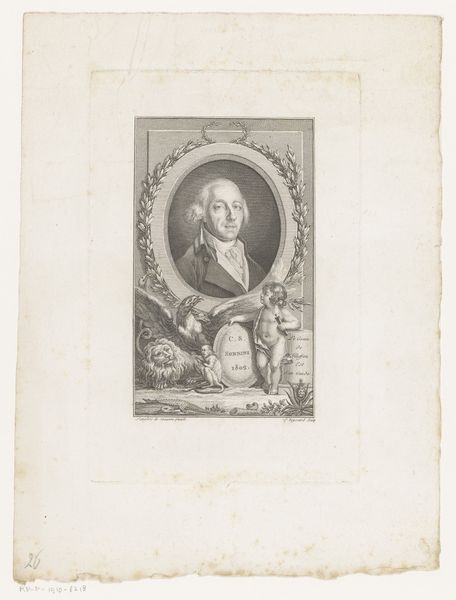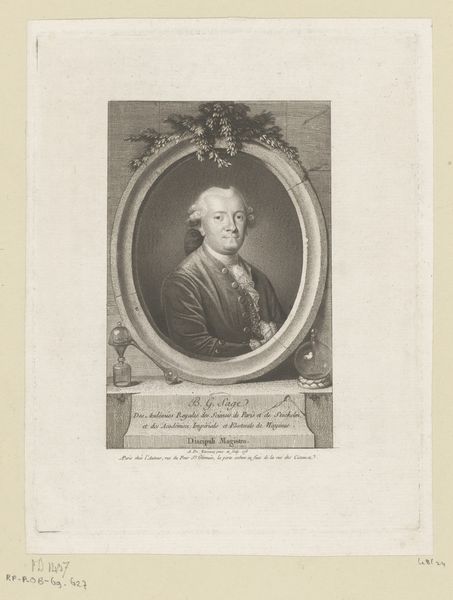
Dimensions: height 187 mm, width 117 mm
Copyright: Rijks Museum: Open Domain
This portrait of Antonius Ridiger was printed in Leipzig around 1720 by Christian Gottlieb Geyser, using an engraving technique. Think of engraving as a form of printmaking that stands apart from painting. The image isn't directly applied but rather, it’s meticulously cut into a metal plate. The artist would have used a tool called a burin to carve lines into the metal, which would then hold ink. When paper is pressed against the plate, the ink transfers, creating the final image. What I find fascinating is how this process mirrors the social context of the time. Engraving demands precision and skilled labor, reflecting the emerging industrial era's emphasis on craftsmanship and exactitude. The texture of the engraving creates depth and detail, which speaks to the importance of detail, and the work involved in the production. Ultimately, this engraving serves as a reminder that art isn't just about representation but also about the labor, tools, and techniques that bring it into existence.
Comments
No comments
Be the first to comment and join the conversation on the ultimate creative platform.
